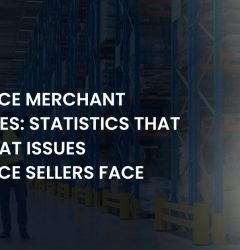25 Aug

Ecommerce businesses often experience significant shifts in sales and revenue depending on the time of year. The holiday season, for example, is a critical period where people are busy buying gifts for others, treating themselves, and making the most of seasonal deals. However, it’s not just the winter holidays that bring about changes—each season affects different niches within the ecommerce industry in its unique way.
For instance, when summer arrives, online stores selling swimwear, beach accessories, and travel essentials often see a surge in orders. Similarly, Halloween brings a wave of sales for costumes and decorations, while winter sees an uptick in purchases of electronics and heaters. Understanding these seasonal trends is crucial for ecommerce businesses to prepare effectively and meet customer demand.
Knowing when these peak seasons occur and how they impact your online store is essential for planning inventory, marketing strategies, and customer service efforts. By familiarizing yourself with key statistics related to these seasonal effects, you can ensure that your business is always ready to capitalize on the busiest times of the year.
General Peak Season Retail Statistics
● Holiday retail sales in 2023 reached a record $942.6 billion USD
The holiday season remains the most critical period for retail, and 2023 was no exception. Despite economic uncertainties, total holiday retail sales soared to $942.6 billion, surpassing expectations. This period is a prime time for ecommerce businesses to maximize their sales as consumers are in a buying frenzy, eager to find the perfect gifts for their loved ones.
● Out of this, $332 billion USD came from ecommerce sales
As online shopping grows in popularity, a significant portion of holiday spending has shifted to ecommerce. In 2023, ecommerce accounted for $332 billion of the total holiday retail sales. The convenience of shopping from home, coupled with the availability of online-exclusive deals, has solidified the importance of having a strong online presence during the holiday season.
● Retail sales saw a 6.7% increase in 2023 compared to 2022
The retail sector has shown remarkable resilience, with sales increasing by 6.7% in 2023 compared to the previous year. This growth highlights the importance of being prepared for peak seasons, as even during challenging economic times, consumers continue to spend—particularly during the holidays.
● Holiday season sales can account for up to 30% of annual retail sales
The holiday season is a make-or-break period for many retailers, with sales during this time accounting for up to 30% of their annual revenue. For ecommerce businesses, this means ensuring that everything from website performance to inventory management is optimized to handle the increased demand. Delays or issues during this crucial period can lead to lost sales and disappointed customers.
● In the US, online shoppers spent $332 billion USD during the holiday season
The holiday season brings a plethora of sales events like Black Friday and Cyber Monday, which drive significant online spending. In 2023, US consumers spent $332 billion online during the holiday season. These events are key opportunities for ecommerce businesses to attract new customers and increase their sales, making it essential to plan marketing campaigns and stock inventory well in advance.
● Ecommerce sales are projected to account for 22.3% of all retail sales by 2024
The trend toward online shopping shows no signs of slowing down. By 2024, ecommerce is expected to make up 22.3% of all retail sales globally. This ongoing shift underscores the need for businesses to invest in their online platforms, ensuring they can meet the growing demand from online shoppers.
● US households spent an average of $1,653 during the holiday season in 2023
Holiday spending continues to rise, with the average US household spending $1,653 in 2023. A combination of gift-giving, holiday parties, and seasonal travel drives this increase. Understanding ecommerce businesses’ spending patterns can help tailor marketing strategies to target high-spending consumers and maximize sales during this peak period.
Comparing Peak Season Retail Data
● November continues to dominate as a peak shopping month, with 6 out of 10 of the most active online buying days
November remains a crucial month for ecommerce, driven by major sales events like Black Friday and Cyber Monday. With 6 of the top 10 online shopping days occurring in November, online retailers need to be fully prepared to handle the surge in traffic and orders.
● Cyber Monday 2023 set a new record, with sales nearly 5 times higher than an average day
Cyber Monday continues to be a powerhouse in the ecommerce world. In 2023, it set a new record, with sales nearly 5 times higher than average. This highlights the importance of having robust infrastructure and marketing plans in place to capitalize on this one-day sales bonanza.
● Black Friday remains a close second, with sales nearly 4 times higher than an average day
Black Friday remains one of the most significant shopping days of the year, second only to Cyber Monday. In 2023, sales on Black Friday were nearly 4 times higher than on an average day. Ecommerce businesses must ensure that their websites are optimized for speed, mobile-friendly, and capable of handling large volumes of traffic to make the most of this opportunity.
Preparing for Peak Seasons
To succeed during peak seasons, ecommerce businesses need to focus on several key areas:
1. Inventory Management: Ensure that you have enough stock to meet the increased demand, particularly for popular items.
2. Website Performance: Your website should be able to handle spikes in traffic without slowing down or crashing.
3. Customer Service: Be ready to address customer inquiries and issues promptly, as exceptional service can set you apart from competitors.
4. Marketing Strategies: Plan your marketing campaigns well in advance, targeting the right audience with compelling offers.
5. Logistics: Ensure that your fulfillment and shipping processes are streamlined to avoid delays, especially during the busy holiday season.
Ecommerce Peak Seasons: Essential Statistics Every Online Business Should Know

As the year progresses, ecommerce businesses witness varying sales patterns and revenue shifts driven by different peak seasons. One such pivotal moment is the Halloween rush, where last-minute shoppers flood online stores in search of costumes and treats. Understanding these seasonal trends can be crucial for ecommerce retailers, helping them prepare for surges in demand and ensuring they meet customer expectations.
Key Dates and Statistics for Peak Season Retail
- October 30th: The Fourth Most Active Day for Online Retail
October 30th, the day before Halloween, consistently ranks as one of the most active days for online shopping. It’s no surprise—many people scramble at the last minute to complete their costume ensembles or replenish their candy supplies. For ecommerce stores specializing in Halloween gear, this day is a golden opportunity. Ensuring efficient delivery options and having ample stock can make all the difference in capturing these last-minute sales.
- December 22nd to December 25th: The Slowest Days for Ecommerce Sales
While the holiday season is generally a peak time for sales, the days from December 22nd to December 25th tend to be slower for ecommerce. During these days, many people have already completed their holiday shopping and are more focused on enjoying the festivities. In fact, sales volumes during this period typically decrease by 12.5% compared to the average shipping volume of the year. Knowing this, businesses can adjust their marketing and inventory strategies accordingly, perhaps focusing on post-holiday promotions instead.
- Q4 Dominates with 40.46% of Total Annual Order Volume
The fourth quarter of the year, encompassing October through December, is undeniably the peak season for online retailers. In 2023, 40.46% of the total annual order volume occurred in this quarter, with a substantial 34.6% of those sales happening in November and December alone. This surge is driven by a series of holidays and shopping events, making it essential for businesses to be fully prepared to handle the increased demand.
- 90% of the Top Selling Days in Ecommerce Occur in Q4
It’s clear that the fourth quarter is a powerhouse for ecommerce, with 90% of the best-selling days happening during this period. Shoppers are eager to purchase gifts and take advantage of holiday deals, creating a frenzy of activity for online retailers. To capitalize on this, businesses must ensure their websites, customer service, and fulfillment processes are running smoothly and efficiently.
Notable Shopping Events and Trends
- Cyber Monday: A Shopping Powerhouse with 34% of US Shoppers Participating
Cyber Monday remains a monumental day for online shopping. In 2023, 34% of US consumers reported that they were highly likely to shop on this day. This event is a major driver of sales, and ecommerce businesses must be ready to meet the demand. From optimizing website performance to preparing sufficient inventory, every detail counts on Cyber Monday.
- Cyber Monday Revenue Boost: 110% for Giants, 104% for Smaller Businesses
The impact of Cyber Monday extends to businesses of all sizes. In 2023, ecommerce giants saw a 110% increase in revenue, while smaller online retailers experienced a 104% boost. Although larger platforms like Amazon have an edge due to their vast customer base and perks like free shipping, smaller businesses still saw significant gains. This highlights the importance of preparing early and offering competitive deals, no matter the size of your ecommerce operation.
- Valentine’s Day: 50% of Single Adults (Aged 25-34) Buy Gifts for Themselves
Valentine’s Day is another holiday that brings a spike in retail sales, particularly among single adults. In 2023, 50% of single people aged 25-34 reported buying gifts for themselves. This trend reflects the growing culture of self-care and self-gifting, which ecommerce businesses can tap into by marketing personalized or self-indulgent products during this season.
- Valentine’s Return Rates Surge to 95%, with Clothing Dominating Returns
Valentine’s Day also sees a significant increase in return rates, with a whopping 95% of returns being clothing items. This trend underscores the importance of having a streamlined returns process in place, especially for clothing retailers. Offering hassle-free returns can enhance customer satisfaction and encourage repeat business.
- Halloween: Over One-Third of Purchases Now Made Online
Halloween is no longer just about trick-or-treating—it’s also a major ecommerce event. In 2023, more than one-third of all Halloween purchases were made through online stores. From costumes to decorations, ecommerce platforms play a critical role in how people prepare for this spooky season. Retailers should consider offering special collections and promotions to capture a larger share of this growing market.
- UK Ecommerce Grew by 50% in November and December Compared to September
In the UK, the holiday season significantly boosts ecommerce sales, with November and December showing a 50% increase in sales compared to September 2023. This dramatic rise underscores the importance of having sufficient inventory and a well-oiled fulfillment process to handle the holiday rush.
- Weather Impact: Good Days Lower Online Sales, Bad Weather Boosts Them
Interestingly, weather conditions also affect online sales. A study found that good weather tends to lower online shopping activity, while bad weather leads to an increase in sales. This insight can be valuable for forecasting demand and managing inventory, especially during unpredictable seasons.
Preparing for Peak Season Success
Peak seasons bring both opportunities and challenges for ecommerce businesses. To ensure you can meet customer demand and maintain high levels of satisfaction, consider these strategies:
1. Optimize Inventory Management: Be proactive in stocking up on popular items well before peak seasons begin.
2. Enhance Website Performance: Ensure your website can handle increased traffic and provide a seamless shopping experience.
3. Streamline Customer Service: Prepare your customer service team to handle a higher volume of inquiries and issues.
4. Plan Strategic Marketing Campaigns: Tailor your marketing efforts to target key shopping events and seasonal trends.
5. Outsource Order Fulfillment: Consider partnering with a fulfillment center to manage increased order volumes efficiently.
Conclusion: Prepare for Peak Seasons with Confidence

Peak seasons are a crucial time for any ecommerce business, offering immense opportunities for growth and revenue. However, with these opportunities come challenges—managing inventory, ensuring timely deliveries, and keeping up with customer demand can be daunting. Understanding the trends and statistics surrounding these high-traffic periods is the first step toward being fully prepared and maximizing your success.
But you don’t have to navigate this alone. At Meteor Space, we’re here to ensure that your business thrives even during the busiest times of the year. Our top-notch order fulfillment services are designed to handle the pressures of peak seasons, from efficiently managing your inventory to delivering orders swiftly and accurately. With our state-of-the-art warehouse and bespoke software, you can gain complete insight into your operations while we take care of the heavy lifting.
By partnering with Meteor Space, you can focus on what you do best—growing your business—while we handle the logistics that keep your customers happy and coming back for more. Don’t let the challenges of peak seasons overwhelm you. Trust Meteor Space to deliver the efficiency and reliability you need to succeed, no matter the time of year.
Ready to take your ecommerce business to the next level?
Contact our experts today and find out how Meteor Space can help you excel, even during the most demanding peak seasons!


